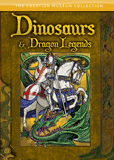Dino Socks
Do birds have lizard legs?
Birds Are Dinosaurs—or So They Say

While it has been simmering in the halls of academia and the journals of paleontology for some time now, the idea that birds evolved from dinosaurs (indeed, some now claim birds are dinosaurs1) has hit the mainstream big time. The reptilian Pete’s Dragon my kids grew up with has been covered with fuzz and feathers in the remake I recently watched with my grandkids. In a generation, everything we thought we knew about dinosaurs has been turned on its head. Again. From the covers of National Geographic magazines to the exhibits in natural history museums to kids’ cartoons, we are inundated with images of feathered dinosaurs and reptilian birds. While the propaganda is abundant, the evidence is sparse . . . and quite controversial. I believe a quote from Dr. David Unwin would fit this situation well: “Exceptional claims require exceptional evidence—we have the former, but not the latter.”
Dino Socks
Several previous Answers in Genesis articles have addressed this misconception (deception) in general, including “Did Dinosaurs Turn into Birds?” by Dr. David Menton and, most recently, “Dinosaurs in Birds’ Clothing?” by Dr. Gabriela Haynes. But we’re going to focus on one particular area: dino socks. After all, don’t the scales seen on birds’ feet and legs serve as proof that they evolved from some reptilian ancestor?
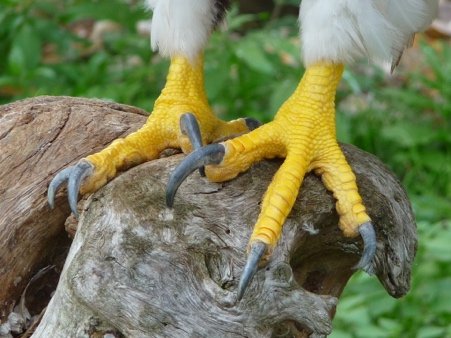
The Marvelous . . . The Amazing . . . Integumentary System!
I feel responsible as a physiologist to provide a little more information about one of the unsung organ systems before diving in—the integumentary system. Integument refers to a tough, outer protective layer and is derived from the Latin word, integumentum, which literally means “a covering.”2 This organ is the largest in the body and forms a physical barrier between the external environment and the internal environment that it serves to protect and maintain.3 It is comprised of skin, hair, scales, feathers, hooves, and nails and differs greatly between and within the common phylogenetic groupings used to classify living organisms.
In evolutionary thinking, the integumentary system needed to undergo significant changes as creatures moved from the sea to the land. (Of course, now they think whales, for example, moved from the land to the sea!) But, if we ignore the shifting storylines, the basic premise is that as animals established themselves on land, they needed to have protective outer coverings that would prevent water loss, protect against ultraviolet (UV) irradiation, and serve as mechanical shields that would protect against the rigors of terrestrial life.4 In this secular worldview, these various features supposedly evolved via minuscule changes over millions of years. Yet, it is difficult to envisage how these fledgling land dwellers crawled out of the sea and survived those millions of years without the appropriate protective coverings. How much easier to believe that a brilliant Designer created them with just the features they needed to thrive in the environments he would place them in!
Scales and Feathers and Fur, Oh My!
As always, you will find that the evidence confirms the authority of Scripture.
Originally, the largely land-dwelling classes of the animal kingdom—reptiles, birds, and mammals—were generally identified by their scales, feathers, or fur respectively. There were noted exceptions and other criteria, but they could be grouped by these unique features of their integument or protective outer covering. So, when we observe scales on the feet and legs of birds, it might be easy to think that this is an evolutionary carryover from their supposed dinosaur relatives. Once again, this is a reminder and an encouragement not simply to accept man’s word but to investigate the evidence for yourself and to do so through the lens of God’s Word. As always, you will find that the evidence confirms the authority of Scripture. So, let’s take a closer look!

So What Is a Scale Anyway?
First, what exactly is a scale? In most biological nomenclature, a scale is a small plate or shield forming part of the outer skin layers of certain animals.5 However, that can mean many different things on different animals and even on the same animal. For example, a fish’s scales derive from the dermis,6 while reptilian scales are derived from the epidermis.7 Bird scales were once thought to be homologous to those of reptiles.8 However, more recent research suggests they are degenerate feathers—so they now propose that bird scales re-evolved after the evolution of feathers.9
To complicate things further, there is more than one kind of scale on birds’ legs and feet. The outermost layer of the skin can keratinize (thicken and form scales), which can then be organized into three different types: cancella, scutella, and scutes—small, medium, and large scales—usually found on the metatarsus (leg) and the dorsal surface (top) of the feet. Furthermore, reticulae, sometimes referred to as “tuberculate scales,” are found on the lateral and medial surfaces (sides) of the foot. The reticulae lack beta-keratin (a hallmark of reptilian scales) and are entirely composed of alpha-keratin.10
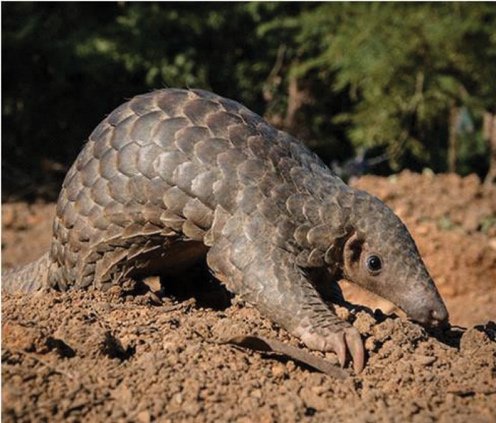
It turns out mammals can have scales too. The pads of feet and undersides of tails are often covered with modified epidermal structures that can be defined as scales. It has been suggested they are derived from cornification processes or stunted fur, much like avian reticulae are derived from stunted feathers.11 The pangolin is covered with thick, overlapping scales—since it doesn’t fit their paradigm, these are presumed to be the result of convergent evolution. This means they somehow arrived at this solution independently through an entirely different line of evolution. My father-in-law was famous for saying, “Two things about it . . . .” Well, there are two things about it: (1) considering the monumental obstacle of statistical probability, what are the odds of randomly chancing upon this awesome protective covering (scales) again and again? (2) if the fact that birds have scales deems them worthy candidates to be direct descendants of dinosaurs (or included with the dinosaurs), why aren’t the mammals included (at least the ones with scales)? It seems like such a convenient coincidence and a self-serving interpretation. And they say our faith gets in the way of seeing things objectively!
Tree of Life . . . or Tangled Thicket?
To sum it up, there are highly specialized integumentary systems unique to each animal that serve their purpose well in protecting them in their given environments. There has been much work done in an attempt to identify evolutionary lineages and trace the development of shared features throughout time—scales being one of these. And yet, while scales are indeed a shared feature of many creatures across many classes, there does not seem to be any clear developmental pathway. Rather, a quote from a recent article titled “From Darwin to DNA: Redrawing the Tree of Life” seems to acknowledge their challenges rather honestly.
Advances in DNA sequencing now allow us to analyse genetic relationships between species, refining these trees with ever greater depth and accuracy, and adding in more and more branches and a trunk that stretches all the way back to the beginning of life on earth, some 4 billion-or-so years ago.
But rather than making things clearer, all this information has turned Darwin’s simple tree into a thorny, tangled thicket, and raises questions about what it even means to be a species.12
Indeed, regardless of their phylogenetic classification, animals exhibit scales where they need scales, derived from unique origins and specific to their unique designs.
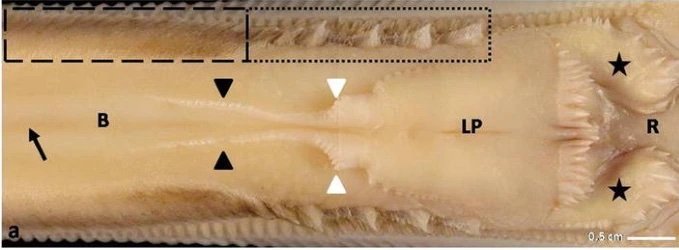
Conical papillae indicated by boxes on a duck tongue (Kinga Skieresz-Szewczyk and Hanna Jackowiak 2016).
Indeed, regardless of their phylogenetic classification, animals exhibit scales where they need scales, derived from unique origins and specific to their unique designs. A form of scale can even be found on the tongue of some birds. Referred to as a lingual nail, this keratinized section of epithelium on the tip of the tongue of parrots, for example, is highly specialized and can be used almost as a spoon. In addition to a lingual nail on the tip of the tongue, ducks can have keratinized serrations (conical papillae) along their tongue that serve as a sieve as they forage on the muddy shores and bottoms of lakes.13 So, again, we see unique integumentary modifications to suit the specific needs of each animal and its specific lifestyle in its specific environment.
“And God made the beasts of the earth according to their kinds and the livestock according to their kinds, and everything that creeps on the ground according to its kind. And God saw that it was good” (Genesis 1:25).
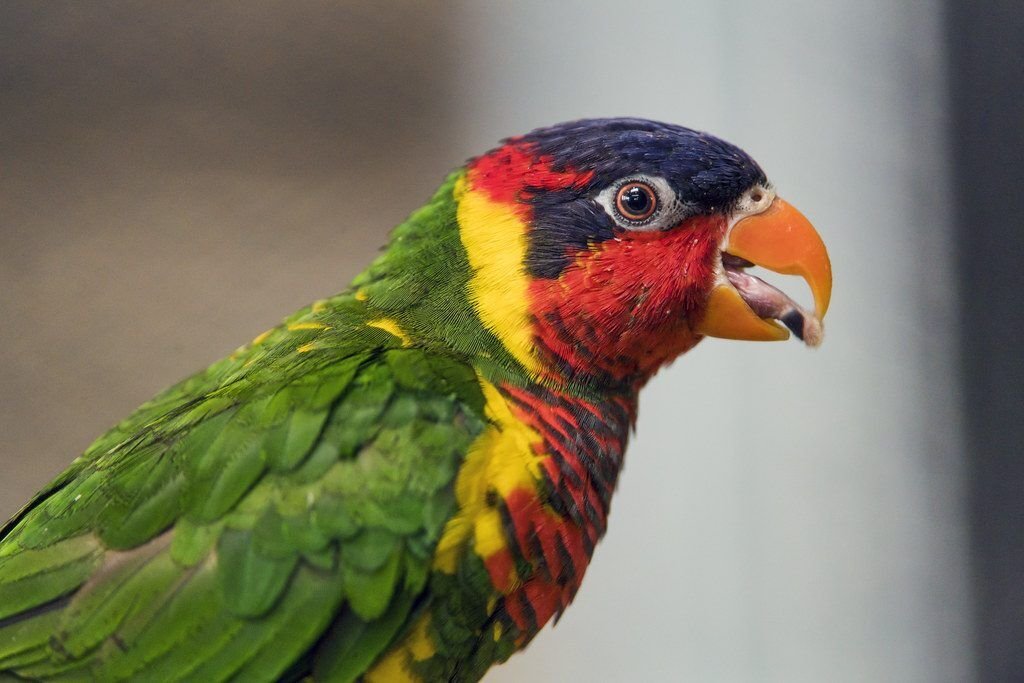
As secular scientists wage long, hard-fought battles over who came from what, when, and where, one simple solution is always overlooked. God created each kind with the genetic variability to “be fruitful and increase in number” (Genesis 1:22 NIV); to multiply and fill the earth; to adapt and thrive and fill every niche in every ecosystem on God’s green earth. And the integumentary system is just one of the ways God equips his creation to do just that. Unique coverings for unique environments. One creative God.
So, we don’t have to buy into the concept of dino socks—that birds must have evolved from dinosaurs because they have scales on their feet. God gave them their own socks—stunted feathers. And they are perfect for walking in the wet grass and mud . . . or worse!
The Ultimate Covering
A popular idiom in our culture is, “I’ve got you covered.” Its informal definition is “to have done, gotten, or provided whatever is needed; to take care of everything.” Well, our integumentary system has us covered. It protects us from the elements of the world; it regulates what can enter and leave the body; it warns us of danger through the sensation of pain; it insulates us. But, as we consider the marvelous and amazing integumentary system, let us not forget an even more important protective covering—the One who designed it. Scripture reminds us, over and over, that God has got us covered. God covers us with protection and favor (Psalm 5:12), and Jesus’ death and resurrection covered our sin (Psalm 85:2). Indeed, Galatians 3:27 reminds us that when we are baptized, we are clothed (covered) with Christ himself. So don’t worry. He has done, gotten, or provided whatever is needed; he has taken care of everything! And he has done it through his Son, Jesus—the greatest covering of all.

For you bless the righteous, O LORD;
you cover him with favor as with a shield. (Psalm 5:12)
You forgave the iniquity of your people;
you covered all their sin. (Psalm 85:2)
For all of you who were baptized into Christ have clothed yourselves with Christ. (Galatians 3:27 NIV)
Footnotes
- Mindy Weisberger, “Are Birds Dinosaurs?” Live Science, January 20, 2020, https://www.livescience.com/are-birds-dinosaurs.html.
- “Integument,” Google, Oxford Languages Dictionary, accessed August 23, 2022, https://www.google.com/search?q=integument&oq=integument&aqs=chrome.0.69i59l4j0i131i433i512l3j0i67i131i433l2j0i131i433i512.1239j0j15&sourceid=chrome&ie=UTF-8.
- Joyce Y. Kim and Harry Dao, Physiology, Integument, (Treasure Island (FL): StatPearls Publishing, 2022), PMID: 32119273, National Library of Medicine, https://www.ncbi.nlm.nih.gov/books/NBK554386/#:~:text=Introduction,glands%2C%20hair%2C%20and%20nails.
- C. Chang, P. Wu, R. E. Baker, P. K. Maini, L. Alibardi, and C. M. Chuong, “Reptile Scale Paradigm: Evo-Devo, Pattern Formation and Regeneration,” International Journal of Developmental Biology 53, no. 5–6 (2009): 813–826, https://doi.org/10.1387/ijdb.072556cc.
- “Scale,” Britannica, the Editors of Encyclopaedia, Encyclopedia Britannica, accessed August 23, 2022, https://www.britannica.com/science/scale-zoology.
- A. Mongera and C. Nüsslein-Volhard, “Scales of Fish Arise From Mesoderm,” Current Biology 23, no. 9 (2013): R338–R339, https://doi.org/10.1016/j.cub.2013.02.056, PMID 23660349.
- “Scale (zoology),” New World Encyclopedia contributors, New World Encyclopedia, accessed August 23, 2022, https://www.newworldencyclopedia.org/p/index.php?title=Scale_(zoology)&oldid=682974.
- A. M. Lucas, Avian Anatomy: Integument, (East Lansing, Michigan: USDA Avian Anatomy Project, Michigan State University, 1972), 67, 344, 394–601.
- X. Zheng, Z. Zhou, X. Wang, F. Zhang, X. Zhang, Y. Wang, G. Wei, S. Wang, and X. Xu, “Hind Wings in Basal Birds and the Evolution of Leg Feathers,” Science 339, no. 6125 (March 2013): 1309–1312, https://doi.org/10.1126/science.1228753, PMID 23493711, S2CID 206544531, Bibcode:2013Sci...339.1309Z; R. H. Sawyer and L. W. Knapp, “Avian skin development and the evolutionary origin of feathers,” Journal of Experimental Zoology Part B: Molecular and Developmental Evolution 298, no. 1 (August 2003): 57–72, https://doi.org/10.1002/jez.b.26, PMID 12949769.
- D. Dhouailly, “A New Scenario for the Evolutionary Origin of Hair, Feather, and Avian Scales,” Journal of Anatomy 214 (2009): 587–606; Peter R. Stettenheim, “The Integumentary Morphology of Modern Birds—An Overview,” American Zoologist 40, no. 4 (2000): 461–477.
- R. I. Spearman, “On the Nature of the Horny Scales of the Pangolin,” Zoological Journal of the Linnean Society 46, no. 310 (2008): 267–273, https://doi.org/10.1111/j.1096-3642.1967.tb00508.x.
- Kat Arney, “From Darwin to DNA: Redrawing the Tree of Life,” Genetics Unzipped, The Podcast of the Genetics Society, posted November 21, 2022, https://geneticsunzipped.com/transcripts/2019/11/21/redrawing-the-tree-of-life.
- Kinga Skieresz-Szewczyk and Hanna Jackowiak, “Morphofunctional Study of the Tongue in the Domestic Duck (Anas platyrhynchos f. domestica, Anatidae): LM and SEM study,” Zoomorphology 135 (2016): 255–268, https://doi.org/10.1007/s00435-016-0302-2.
Recommended Resources

Answers in Genesis is an apologetics ministry, dedicated to helping Christians defend their faith and proclaim the good news of Jesus Christ.
- Customer Service 800.778.3390
- © 2024 Answers in Genesis






